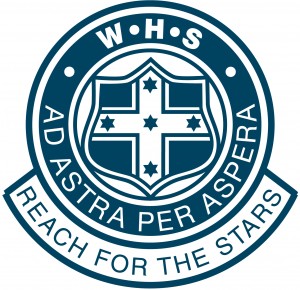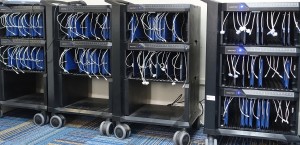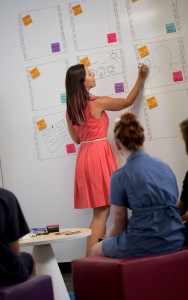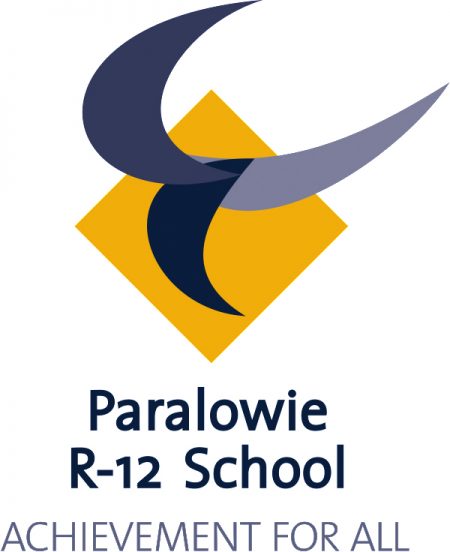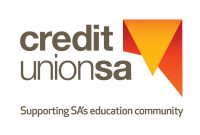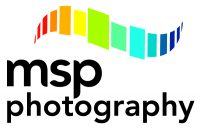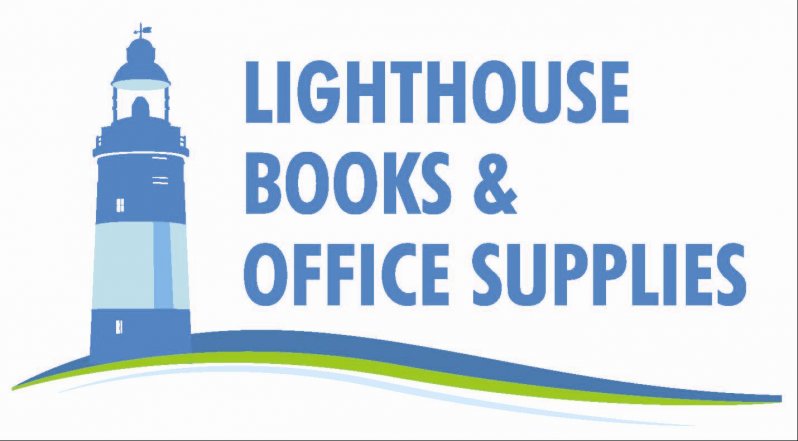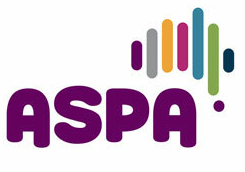
From Library to learning Hub
This post looks at the efforts of two metropolitan high school – Woodville High School and Wirreanda Secondary School – to create a ‘learning hub’ from the existing library/resource centre.
Both schools were keen to improve the education outcomes of the existing library/resource centre. In their view, the education outcomes did not line up with the quantum of resources expended. Both schools were determined to create a new facility as the centre for innovative pedagogy in the school. Both adopted the terminology of ‘learning hub’ to emphasise the way influence from the centre was to radiate out to the whole school. Both schools recognised the potential offered by new technology to re-design the existing library/resource centre to meet their desired education outcomes.
For both schools, the focus on improved education outcomes was the key driver. For Woodville the stated vision of the learning hub is of … a centre for dynamic learning which promotes innovative approaches to inquiry based teaching and learning for all students and staff. It is a shared learning space designed to engender contemporary learners with capacities for critical, creative and reflective thinking through inquiry and problem solving, and appropriate use of ICT. And for Wirreanda, the learning hub exists … to support the construction of knowledge and connections between learning and the real world using modern technologies and research based learning strategies for learners of all ages.
From the 1970s to now
Change in terms of the school library is hardly new. From the early 1970s, with the introduction of the new ‘resource centre’, there was a deliberate attempt to shift the focus from the traditional library as a static storage place of reference material to a dynamic teaching and learning area that provided students with a rich array of resource materials in an increasingly diverse range of media; although the technology at the time was rather primitive by today’s standards and limited to television, film, slides and early video. Teaching staff can probably still remember the ‘annexe’ and ‘seminar room’ that were intended to set up dedicated teaching areas within the expanded library/resource centre.
As well, the focus on ‘resource-based learning’ or inquiry-based learning’ – and all variations of ‘personalised learning’ – has traditionally been closely identified with the library.
However, over the more recent past, two powerful forces have encouraged schools to re-assess the role and operation of the school library. The first has been the impact of the ever-expanding technology associated with the digitisation of information, which, at the very least, has challenged the school library’s traditional status as the single – or at least most important or most accessible – repository of relevant research material. The second has been the mandated focus on classroom pedagogy, which has come from curriculum design at both state and national levels, and also far more explicit and formal descriptions of what constitutes quality teaching and learning. Essentially, at the very time that technology has opened up a range of new possibilities for the library, there is the corresponding imperative to take the traditional inquiry-based approach to teaching and learning, which has been a quality feature of library work, and apply it in a more organised, structured and coherent manner across the entire school. Succinctly, schools are now in the position to make the library the focus for demonstrating what quality teaching and learning look like; and, at the same time, they have the opportunity to redesign the physical space and attributes of the traditional library to reinforce this focus on teaching and learning. This is precisely what both Woodville and Wirreanda have done.
Looking at the experiences of both schools, it is possible to identify several issues that need to be worked through as part of the process of library renewal.
- There needs to be critical analysis and awareness of the real force driving the change
While new technology associated with the digitisation of information provided the means for the 2 schools to re-assess and re-work traditional library resources and practices, the technology per se was not the driving force for the change to the library’s function. Rather, the intention was to position the library as the centre of teaching and learning within the school and, fortunately, the new technology provided significant support for this goal. For both schools, the emphasis is clearly on education outcomes and the technology is a means to this end.
Woodville High School had as its first 3 key outcomes:
- The Learning Hub is regarded as a dynamic and supportive space for both teachers and students which addresses the requirements of the Art and Science of Teaching (ASOT) framework for effective teaching that provides students with 21st Century learning skills.
- Continued development of Inquiry-based learning and research skills across years 8-12.
- Staff and students are confident and skilled in applying current digital technologies and learning tools/resources for learning and communication in each stage of the inquiry process.
Wirreanda Secondary School gave an equivalent focus. The key outcomes were:
- The development of inquiry-based learning and research skills across years 8 -12, and the delivery of the research project are strengthened through the development of an Innovative learning Hub.
- Students and staff can skilfully apply current digital technologies and learning tools/resources for learning and communication.
- Innovative pedagogies are used widely across all curriculum area to support deep, critical and creative learning.
- The role of the principal in driving the change is essential
Because the change to the library’s function is so fundamental to the school’s teaching and learning priorities, and there are so many associated impacts in areas such as staffing and resourcing, it is essential that the change is driven by the principal. In both schools, the principal certainly played the lead role. The staff, students and whole school community saw that this change was a priority for the principal and that the principal was personally and directly leading the change. The principal had to be able to articulate the need for the change and represent what the new facility and its educational outcomes would look like. This meant in turn that the principal had to be well-informed in terms of the forces driving the change and also very strategic in setting up the process to drive the change. In each school, this process involved strong emphasis on appropriate forms and degrees of communication and consultation. There was also an emphasis placed on ensuring that the most skilled and informed staff could provide supportive leadership in the change process.
- Communication and consultation have to underpin the process
In both schools there was an obvious perception across both staff and students that change was required, in the sense that the level of resourcing allocated to the library was not delivering commensurate outcomes in teaching and learning across the school. This was the critically important starting point. In the specific case of Woodville HS, the review process associated with their ICS accreditation had also identified the library as a focus for change and improvement. As a consequence, Woodville embarked on a very extensive communication and consultation processes that enabled the full range of opinions, beliefs, criticisms and ‘non-negotiables’ to be raised and considered. Staff and students always hold – often passionately – definite views on the role and operation of the library in the school, and Woodville worked to capture these positions and use them to inform the change process. Staff needed to be reassured that their access to curriculum resources would not be compromised.
Both schools remarked how important it was to involve students, and both pointed to specific instances where student advice directly influenced the design brief for the new complex. As well, both schools developed strategies for their student ‘digital leaders’ – students with the skills and motivation to support other students and teachers with the technology – to be involved in the change process. The 2 schools further developed programs with their digital leaders in the period after the creation of the learning hub. Both schools rate the involvement, work and value of the student digital leaders very highly. The video that promotes the Learning Hub on the Woodville website has been prepared by a student production team.
Importantly, in both schools the emphasis on communication and consultation did not conclude with the opening of the new learning hub and what is striking in both cases is the emphasis placed on setting up and promoting new communication channels – by the creation of dedicated blogs, Twitter accounts etc – emanating for the learning hub. The communication channels have been deliberately developed to reflect and exploit the new technology.
- The library must retain its symbolic/iconic status within the school
In both schools, the new facility is superior to the library building it replaced, with the general design and ambience of the new facilities making for a more appealing teaching and learning environment.
At Woodville HS, the learning hub building has been fashioned from the original school hall (1929) to create a distinctive and valued space. At Wirreanda SS, the new facility is very light and open and has a larger floor area than the previous library.
Both schools have built in high levels of flexibility through the use of contemporary furniture and both have a deliberate policy of ensuring that the learning hub can be used as fully and creatively as possible across the whole range of school activities: staff professional development, meetings, visiting speakers, special displays/exhibitions/performances etc . The clear intention is to have the facility function as – and be seen as – the core or ‘hub’ of the school. Students will be familiar with the type of facility created because many of the design features are increasingly also employed in local, public libraries, and tertiary institutions have their own versions of student learning hubs.
Both schools have also retained one very important feature of the previous generation of libraries, with a purpose-designed, comfortable space in the new facility dedicated specifically for conventional adolescent reading programs.
Importantly, the library has not been removed nor its significance downgraded. Rather, it has been re-imagined and re-designed to serve a new set of education priorities.
- Ongoing review and assessment mechanisms must be incorporated within the change
Because the quality of both teaching and learning across the whole school is seen as being tied to the new learning hub, it is inevitable that the operations of the learning hub will be closely monitored. Schools need to set up record-keeping systems, which can routinely generate essential data – which teachers, classes, faculties, subjects, year levels etc are using the facility, what are the most common uses etc – and there need to be regular reporting cycles and occasions where the data is revised and analysed. The intention is always be to fine-tune and improve the performance of the learning hub. The 2 schools have set up ongoing review mechanisms and, importantly, both schools accept that change, in terms of both design and function, will be ongoing.
- Staffing is the most important element in the overall success of the change
In both schools, the principal ensured that job and person descriptions reflected exactly the thinking behind the creation of the learning hub. For example, the following were the person specifications for the position of Learning Hub Manager at Woodville:
Personal Skills and Abilities:
- Demonstrated high levels of interpersonal and communication skills in working collaboratively and successfully with a diverse range of staff and students to improve student learning outcomes
Knowledge:
- Knowledge of inquiry-based and problem-based approaches to research and learning as outlined in the Australian Curriculum and in the Research Project requirements for SACE
- Knowledge of a range of technologies and apps which support inquiry, problem solving and creative presentation of findings.
Experience:
- Demonstrated success in supporting innovative and ICT enhanced successful teaching practices to support a diversity go student learning
Given the basic claim that the learning hub represents the best in contemporary pedagogy, it is essential that all those staff involved in the learning hub – either as manager, teacher/coach or SSO – can demonstrate outstanding skills and expertise in all relevant areas. They need to able to engage, initiate contact and work supportively with other staff. They need to be able to work as part of a small but highly collaborative team.
The principals of both schools noted that staffing was the single most important key to the success of the new learning hub. They were also prepared to support staff with ongoing professional development.
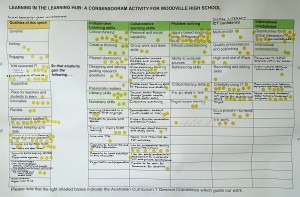
Working papers of staff consultation on the creation of the Learning Hub at Woodville. Note the emphasis on staffing, inquiry-based learning and ICT.
- Attention needs to be given to maximising the efficiency of the change
As for any significant change, the principal will always try to maximise education outcomes and rationalise resource demands. As this always occurs within the distinctive features of each, individual school, there will inevitably be variations across schools in areas such as the configuration of allied services within the learning hub, the physical layout of the facility and the nature and extent of the technology available within it. Thus, while the facility in each of the 2 schools under review here is immediately recognisable as a learning hub, there are some important differences in how they have been set up. For example, at Wirreanda Secondary School it has been possible to co-locate the school’s Information Technology Support team within the learning hub. There is obvious merit in this arrangement, but not every school will have the physical space to achieve this end. Also at Wirreanda, it has been possible to locate the Learner Wellbeing Centre adjacent to the Learning Centre. This colocation strengthens the sense that this total area is indeed the ‘centre’ of the school and it reinforces the school’s commitment to the integration of both learning and wellbeing. Again, not every school will have this option. At the same time, there are common features to note. For example, in both schools the management of bulk books has continued as a responsibility of the new learning hub. Both schools have set up a media room – principally for video production – in the new facility, prompted primarily by student requests. Again, as already noted, both schools have set up a dedicated and comfortable area for adolescent fiction, complete with the traditional banks of hard-copy fiction. Overall, there will inevitably be variations between schools but the more important point is that any new facility like this has to achieves its educational outcomes within the unique demands, possibilities and constraints of the individual school.
- Individual schools need to collaborate
Woodville has been keen to acknowledge the support it received from Wirreanda and both schools have supported each other. At the same time, each school has benefitted from contacts and collaboration with a wider set of schools, including primary schools. This is definitely an area of school improvement where the individual school principal needs to consult widely with colleagues, and similar experiences across schools need to be shared.
Resources
Both schools feature the Learning Hub prominently on their individual website. There you can see videos, featuring the 2 principals (Meredith Edwards and Tony Lunniss) that present an overview of the Learning Hub – its purpose, nature and operation – as well as dedicated blogs and portals that given even more detail.


